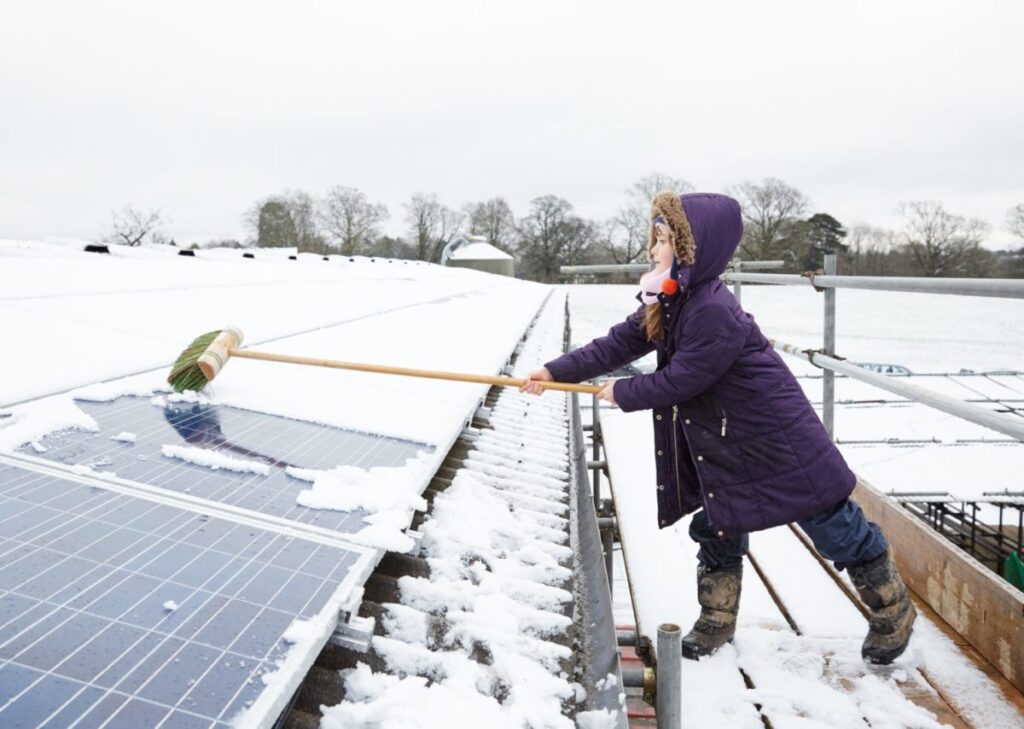The new coating, developed by scientists in Poland, uses transparent silicone epoxy modified with functionalized octaspherosilicates. The researchers created five samples, each with a different combination of chemicals, and found that ice adhesion was reduced by up to 43%, while the freeze delay time was increased by up to 70 times.
A group of scientists from Poland have developed a new anti-icing layer for PV panels.
The new coating is based on transparent silicone epoxy modified with two or three functionalized octaspherosilicates (OSS). Octaspherosilicates are a class of organosilicon compounds with a customizable structure that can improve anti-icing properties.
“The formation and accumulation of snow and ice on the panels can block light and thus minimize or even stop energy production,” the researchers said. “Coatings could fully or partially replace deicing methods used in the industry, which are inefficient. There are no reports in the literature of the use of similar chemical modifications of resins and polymer coatings, let alone transparent ones.”
The group created five different coating samples and started with a hybrid silicone-epoxy resin. The OSSs were made in a flask containing 20 g of OSSs, 200 mL of toluene, and varying amounts of olefins depending on the compound tested. Two weight percent (2 wt%) of the OSS was then integrated into the resin. The coating was applied to samples using the spin coat method.
Two of the samples had two olefins – OSS1 had allyl methacrylate (MA) and vinyltrimethoxysilane (VTMOS) in a molar ratio of 4:4; while OSS2 had MA and hexene (HEX) in a molar ratio of 6:2. Three samples had three olefins – OSS3 had allyl glycidyl ether (AGE), octene (OCT) and octadecene (OD) in a ratio of 4:2:2; OSS4 had AGE, allyl octafluoropentyl ether (AOFP), and OD in a ratio of 5:1:2; and OSS5 had AGE, AOFP, and OD in a 4:2:2 ratio. In addition, a sixth reference sample (REF) used an unmodified silicone epoxy coating.
“The icephobic properties were discussed by determining an ice adhesion (IA) and a water droplet freezing delay time (FDT),” the scientists explained. “The chemical modifications of silicone epoxy coatings with bi- and tri-functional octaspherosilicates showed promising results. In any case, the modification improved the anti-icing properties. A reduction in IA and improvement in FDT were observed compared to the unmodified sample.”
While the REF sample had an FDT of three minutes (min) and an IA of 178 kilopascals (kPa), OSS 1 had over 210 minutes and 102 kPa, respectively. OSS 2 performed at 32 minutes and 150 kPa, while OSS3 showed more than 210 minutes and 118 kPa. Finally, OSS4 had an FDT of over 210 minutes and an IA of 163 KpA, while OSS5 had 39 minutes and 157 kPa.
“Of the silicone epoxy coatings tested, the OSS1 and OSS3 samples showed the highest anti-icing properties. These coatings showed the lowest ice adhesion and the longest freezing delay time of water droplets,” the academics said. “However, a slightly lower IA value was obtained for the coating modified with OSS1. It can therefore be concluded that the sample with this additive resulted in the highest anti-icing performance, with a 43% IA reduction and a 70 times higher FDT value compared to the unmodified coating.”
The group also emphasized that the coatings could potentially be applied to photovoltaic panels, “as the modification performed did not affect the optical properties of the coatings examined.”
Their findings were presented in “Transparent anti-icing coatings modified with bi- and tri-functional octaspherosilicates for photovoltaic panels”, published in Colloids and surfaces A: physicochemical and technical aspects. The research was conducted by scientists from Poland’s Warsaw University of Technology, Technology Partners Foundation, Military University of Technology and Adam Mickiewicz University in Poznan.
This content is copyrighted and may not be reused. If you would like to collaborate with us and reuse some of our content, please contact: editors@pv-magazine.com.

